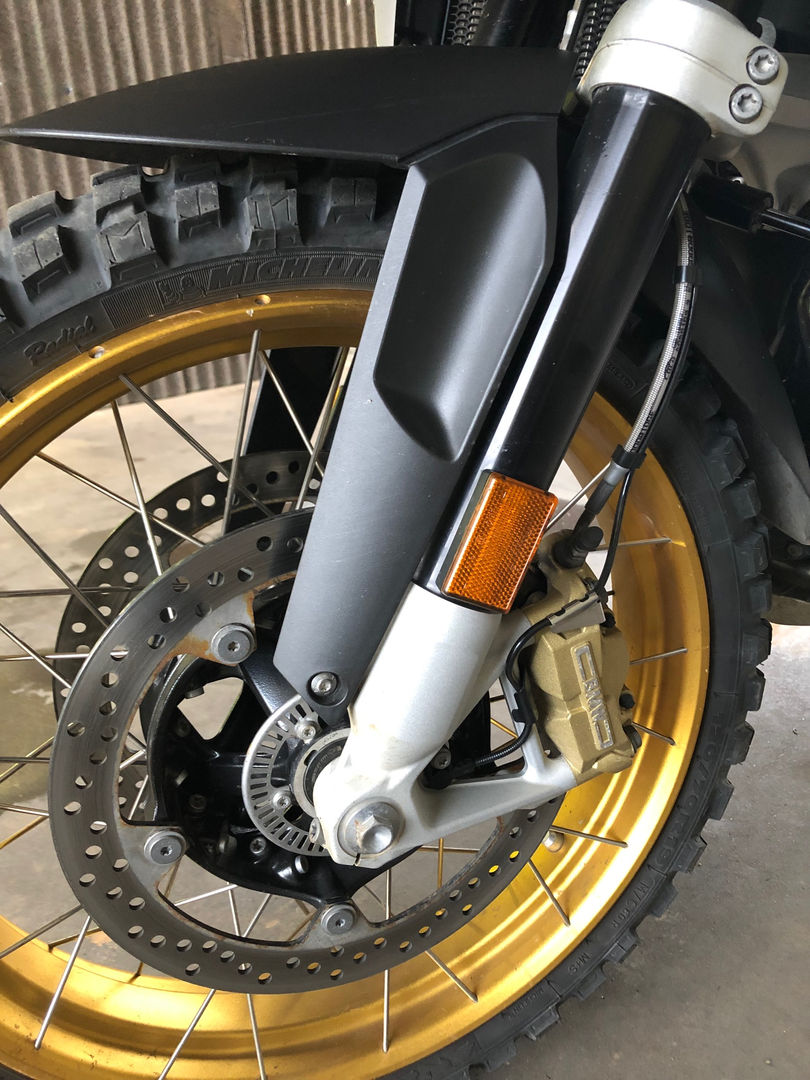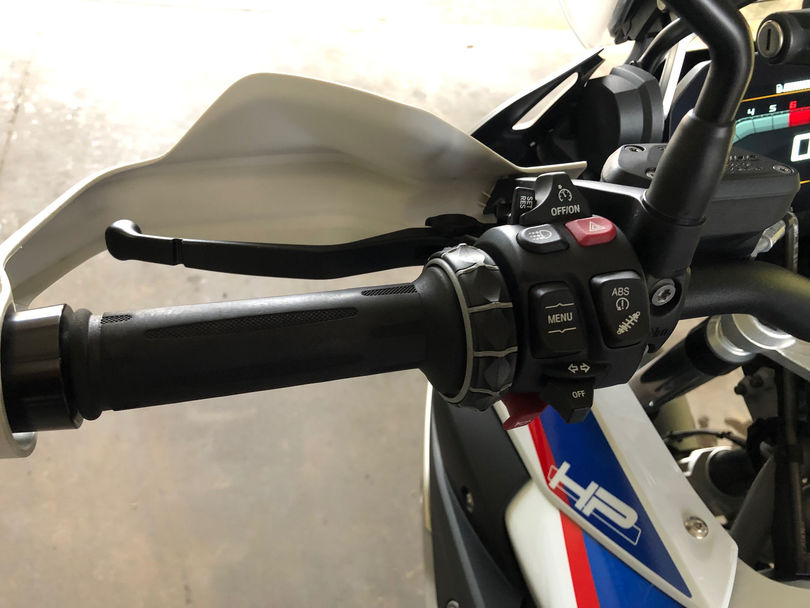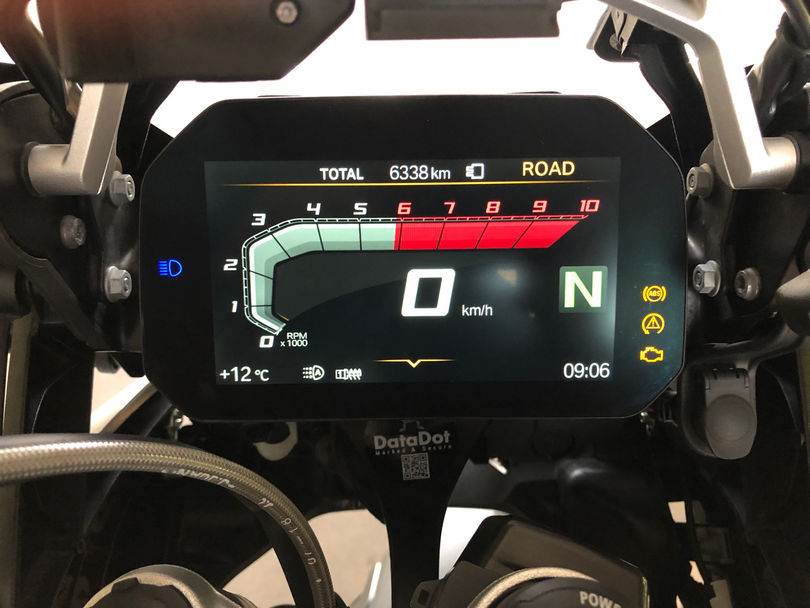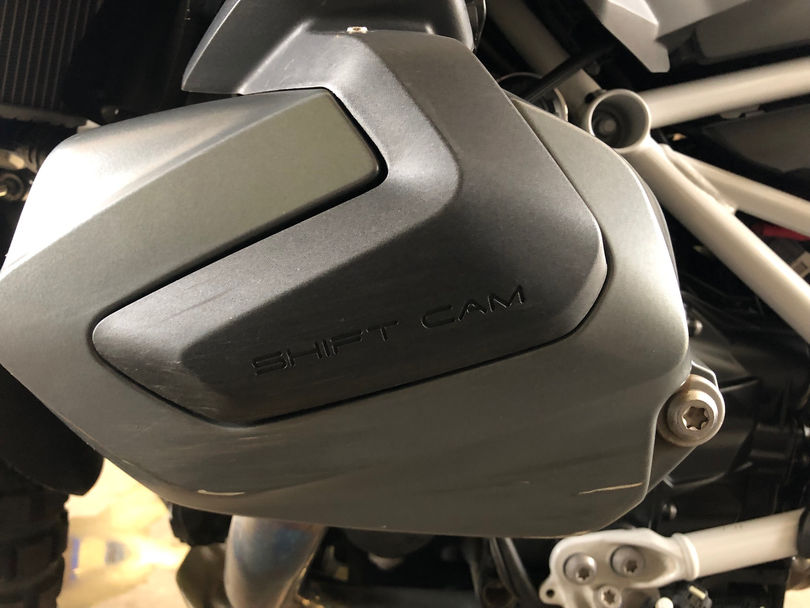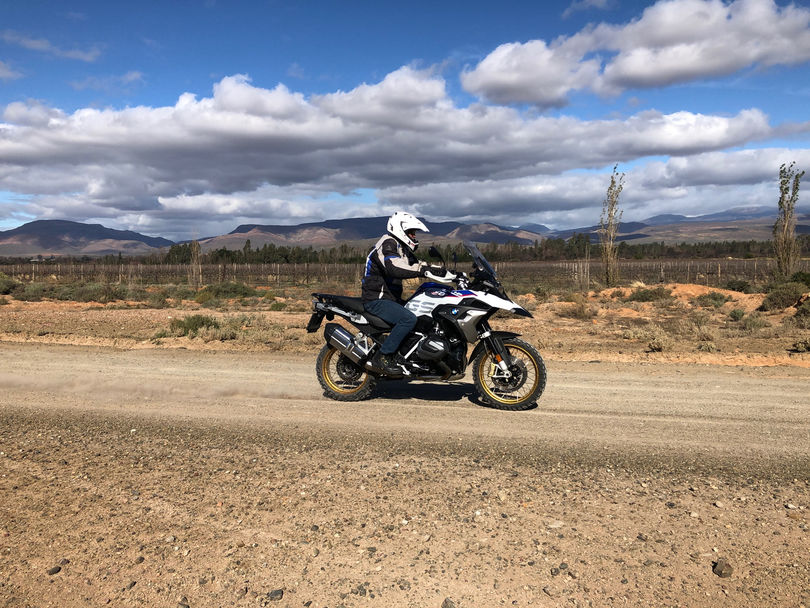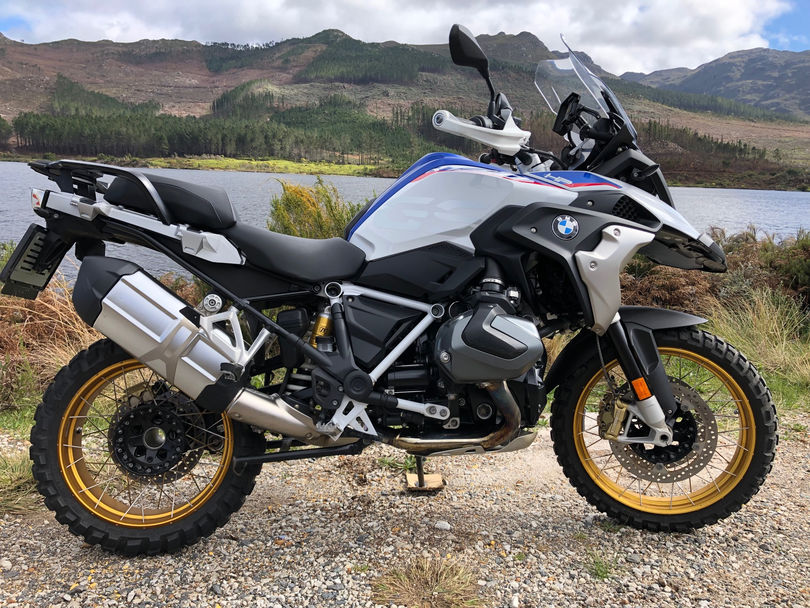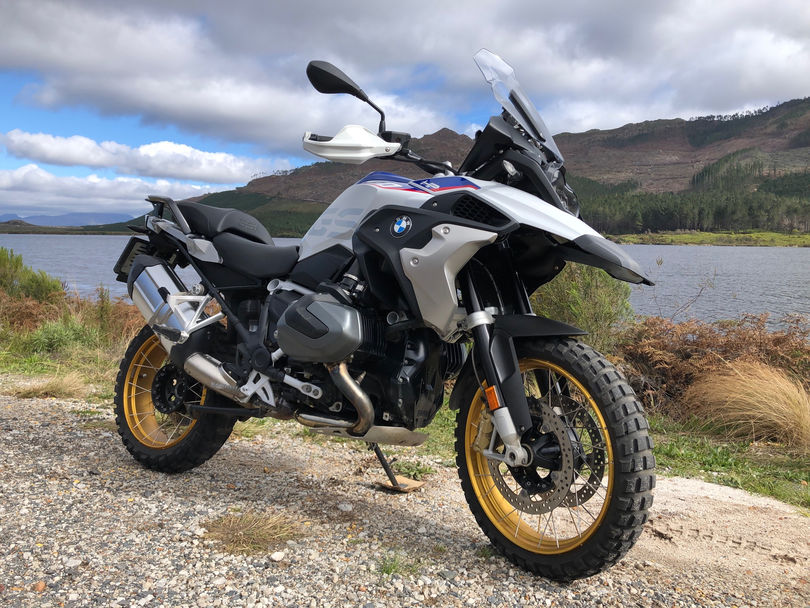
25 Jul On yer bike: BMW GS
FMM Curator Wayne Harley gets up-to-date with the latest version of BMW’s renowned GS…
When I started writing this monthly column, I never thought I would ever get to ride the latest and best that the motorcycle industry has to offer. It was more about riding the vintage and veteran bikes in the museum, and sharing that good old ‘bugs in the teeth’ motorcycle feeling of a bygone golden era. But one cannot turn down a ride on one of the industry’s leading manufacturer’s bikes such as the legendary BMW GS.
First seen in the late-70s as an in-house sport enduro machine and built by factory technicians all without company backing, it didn’t take long for the men in the suits at BMW Motorrad to see that it would be a fantastic and profitable addition to its line-up. By 1980, the BMW 80 GS was officially available and would set the standard in the dual-sport motorcycling fraternity from that point on. In 1987 the second generation appeared, the R 100 GS, with the engine capacity pumped up to 1 000 cm3 to help provide a perfect balance of road and off-the-beaten-track capability, all encased in a super reliable unit. Then in the mid-90s, multi-valved engines made their appearance, helping to keep the GS right at the sharp end of its market segment.
BMW has never been a company to rest on its laurels and development was ongoing. Soon the R 1100 GS appeared, which was followed by the R 1150 GS Adventure in 2002, a motorcycle that was specifically geared at long-distance goes-anywhere travelling. Two years later the BMW R 1200 GS was launched, and thereafter improvements were steadily introduced.
So when I was offered a test ride on the new BMW R 1250 GS, I was rather excited as I have very little experience with BMW or the GS range, other than a private spin on a 100 RS and then the R nineT that I tested and reported on in February. So I did a lot of reading on this new offering from BMW, and it was the engine that had me most excited as this new GS offers the next generation of BMW engine expertise. Long gone are the air-cooled days; everything is now liquid-cooled and the twin-cylinder boxer motor features multi-valves and new ShiftCam technology, which offers outstanding power delivery no matter the engine speed. For me to explain this would not do the engineering justice, so I have included a link to the Motorad press release on the subject at the end of this report.
But in a nutshell, thanks to ShiftCam, power and torque outputs have been raised to 100 kW @ 7 750 r/min and 143 N.m @ 6 250, respectively, which brings BMW within shouting distance of the other kids on the block. The changes improve performance across the rev range, increase fuel efficiency, and reduce CO2 emissions. Impressed with these improvements, I took delivery of a stunning-looking R 1250 GS in HP Style, which is a combination of BMW Motor Sport livery and a set of gold anodized spoked wheels. Standing 1,43 metres high and just over 2,2 metres long…oh man, you get the feeling that you could do the Dakar on this machine.
However, it’s not all just about the power delivery as BMW has also taken care of ride quality, with improved features including two basic modes Rain and Road (DTC). However, on top of that, in Road mode you have Dynamic and Dynamic Pro plus Enduro and Enduro Pro; these modes affect and alter traction during leaning and cornering as well as your ABS. In Dynamic and Enduro there is a little more freedom given to the rider, allowing more responsive throttle and letting the rider drift the rear wheel, pop a wheelie etc. In the Pro settings, as I understand it, the rider can customise the set-up but must not forget that in Enduro and Enduro Pro modes the ABS is deactivated. On top of this is what is labelled Dynamic Brake Control (DBC) Assist, which is purely a safety feature put in place for use during emergency braking. Again as I understand it, this feature manages and assists braking during emergencies but also stops panic or unintentional throttle application.
As for the Dynamic ESA (Electronic Suspension Adjustment), “So ja, let me try explain it as it is almost magic!” The system controls the BMW Motorrad Telelever front and Paralever single swing-arm rear suspension and automatically adjusts damping and pre-load. It has an auto-levelling function (they say), but the more I rode the bike the more I felt the system control tail-squat under hard acceleration. And although I couldn’t detect it, BMW claims the ESA detects lean angle, throttle and braking data. The auto-levelling feature does help with manoeuvring at slow speeds and makes the bike feel smaller and lighter than it actually is. According to BMW, ESA adjusts and compensates as soon as you have both feet on the pegs. ESA is not available in Dynamic Pro or Enduro Pro riding modes, but once you realise this system is on and pay attention, or specifically look at how the bike handles, I can’t imagine why anyone would turn it off. Provided you have selected the correct riding mode, this 250 kg machine is superbly well-grounded.
This did start me thinking; with all these riding aids and mods, could this motorcycle not instil a little over-confidence in some riders, who might find themselves coming up short when technology and talent run out? This thought put matters into perspective for me. Something I totally recommend is that owners attend a BMW riding academy or other training facility before selecting the likes of Enduro Pro on the 6-inch TFT display, and go blasting down some remote Karoo plaas pad… At the rate the modern motorcycle is progressing, any rider may be well advised to attend a relevant course with every new machine purchased, almost like an airline pilot does when converting to a different plane. The principles remain the same but the equipment and systems differ. I say this because I found myself experimenting with the GS’s modes and features and learning how they worked while ‘on the fly’, which is really not the ideal way to do it.
All that aside, the BMW R 1250 GS is really a great motorcycle to ride and over a weekend I covered more than 350 kilometres in comfort. From crawling down narrow tracks, kicking up the dust on farm roads and the occasional fast open roads, the GS handled it all with ease; nothing was too much for this new GS – or it might actually be a case I wasn’t enough for the GS. As with R nineT earlier this year, stopping this GS is no problem; the brakes are excellent BMW 305 mm 4-pot caliper dual discs on the front wheel, and a single 276 mm 2-pot caliper disc at the rear, with ABS and Dynamic Brake Assist (DBA).
At the end of the day it is hard to fault the new BMW R 1250 GS, although the standard screen is not the best out there. I am not tall but even with the standard screen set at maximum height; there was a lot of wind turbulence. I would definitely opt for the larger touring screen. Also, the Michelin Annakee tyre would not be my first choice as the massive knobblies vibrate through the handlebars, and the road noise sounds like a swarm of bees. It may all look aggressive and Dakar-ready, but spend a few hours riding on these tyres and you will understand what I’m on about. You could argue the services offered by the top-class BMW Connectivity feature allows you to blank that all out with music etc., however it depends on your helmet and its capabilities.
The two days I had with the BMW 1250 GS only allowed me to scratch the surface of what this modern machine can do and it felt like I needed a PhD to understand half of the technical info, but one small little fact remains… When you are out on that deserted back road away from everyone and take a handful of right ear and twist it properly, the smile of anticipation is always the same…
